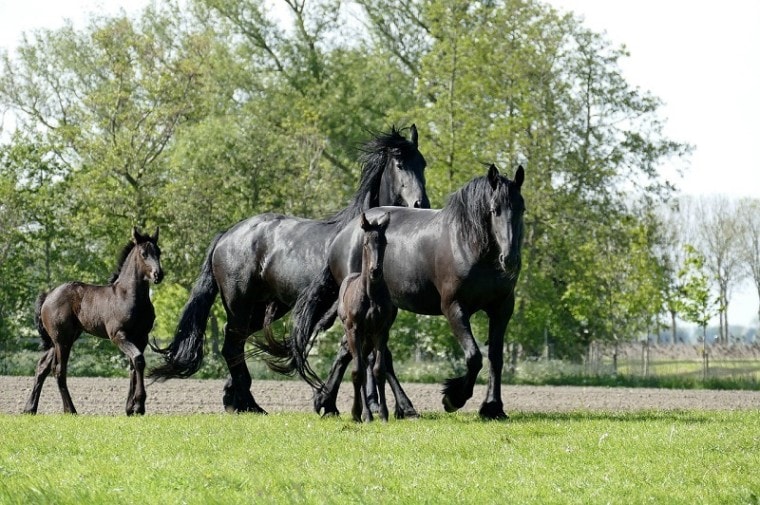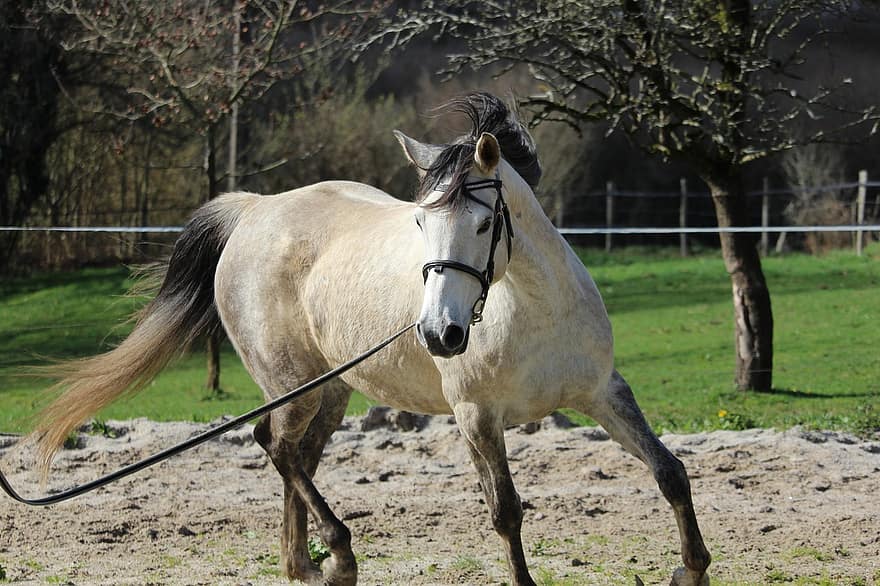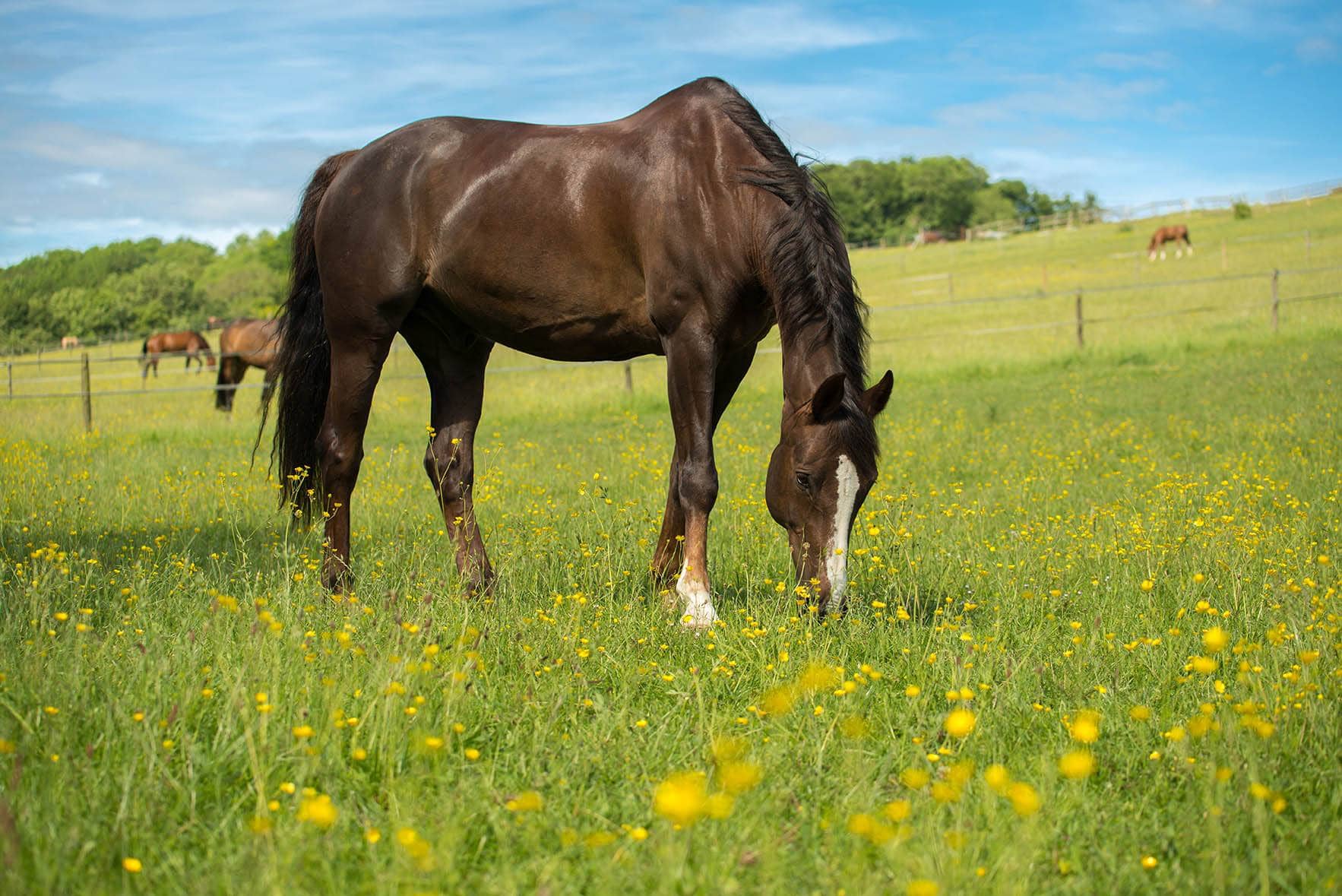
There are many differing opinions as to exactly how many horse breeds there officially are, with some estimates as low as 150 and others well over 300. One thing is for sure: horse breeds are increasing every year, with new breeds constantly being developed and added to registries.
Since horses were first domesticated, they have been selectively bred for a wide variety of purposes in order to develop the perfect horse for the job, including warfare, farm work, hunting, racing, and sports. This has led to a dizzying array of body types, temperaments, and appearances that are still being developed today.
In this article, we look at the most popular horse breeds, as well as a bit of the history involved in their development, to give you a rough idea of how many different horse breeds there really are. Let’s get started!
The Origin of the Domestic Horse
According to archeological evidence, horses are thought to have first been domesticated at least 6,000 years ago on the grasslands of Ukraine, between southwest Russia and west Kazakhstan. They then spread to Europe and Asia and mixed with other wild horses along the way. They were likely used both for riding and as a source of meat and milk early on in their domestication.
A study published in 2017 linked all modern horse genetics back to just two bloodlines: the Arabian horse and the now-extinct Turkoman horse. They were selectively bred for desirable characteristics, resulting in all the breeds that we know and love today.
Types of Horses

There are three distinct types of horses: heavy horses, light horses, and ponies. That said, many argue that there is also a fourth type: feral horses. These different types are all categorized mainly by their size, although this takes into account bone structure and mass, as well as height.
Heavy horses are the largest, heaviest category in size, structure, and build. These are usually referred to as “cold-blood” horses. Examples include carriage and driving horses, as they are primarily used for their stamina and strength to pull heavy weights and travel long distances.
Light horses are agile, athletic, and fast, making them ideal for riding and racing. They have longer and more angular bodies that saddles fit onto perfectly. These types of horses are both “hot-bloods”, as they are much faster and more agile than heavy horses but are not as strong and have far less endurance, and “warm-bloods”, a combination of the two.
Ponies are the smallest of the three and often have thicker coats and shorter, more muscular necks. There are about 80 different pony breeds, one of the most popular and well-known being the Shetland Pony.
The Number of Horse Breeds
It is almost impossible to calculate exactly how many distinct horse breeds there are. Some estimates are as low as 150, others are around 300, and some estimate as much as 600! Since it is so difficult to put a number to how many breeds there are, here are the most popular types of horse breeds found today.
Hotbloods

Hotbloods are widely used in the West for racing and are defined as horse breeds that are capable of high speed and endurance. There are only two officially recognized hotblood horse breeds: the Arabian and Thoroughbred. But there are other breeds widely considered to be hotbloods too. Arabians have a long history of domestication, although they did not reach the European continent until the late 1600s. They were then bred with English horses to create the Thoroughbred, which has been widely used in sporting events. The most well-known hot blood breeds include:
Coldbloods

Coldblood horses are the draught horses, traditionally employed for farm labor, pulling carts and carriages, and agricultural work, and they have long been revered for their calm and easy-going temperament. There are likely hundreds of different breeds classed as coldbloods, and the most well-known include:
Warmbloods

Warmblood horses make up the majority of horse breeds, and the exact definition of what constitutes a warmblood horse can cause confusion even among the most knowledgeable horse owners. In the simplest of terms, warmblood horses are a mixture of coldblood and hotblood breeds. These horses were developed from the need to have an animal that could be ridden at speed but also used for agricultural work and labor when needed. They have become the most popular breeds in equestrian sports today. The most beloved warmblood breeds include:
Final Thoughts
While there is no real way to tell exactly how many horse breeds there are, there are a few popular breeds that have stood the test of time and have been developed over hundreds of years. No matter what you need a horse for, whether pleasure riding, sports, or hunting, there is a breed to perfectly suit your needs. We’ll likely never know the number of different breeds out there, as there are just so many, with more being added all the time. We do know for sure, however, that the development of new horse breeds will not stop, and neither will the preservation of one of the world’s most adored and celebrated breeds.
Featured Image Credit: AlkeMade, Pixabay









